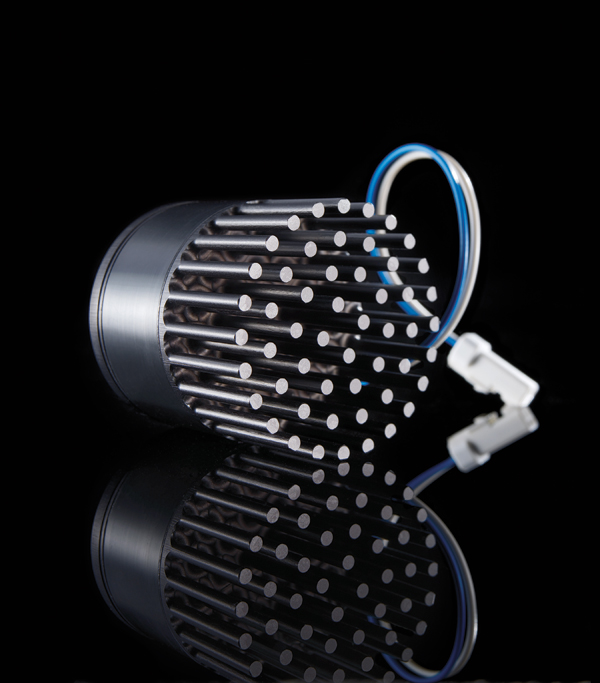Flexible Heat Miner

Thermoelectric generators directly convert waste heat into electricity. The Perpetua Power Puck is the first to use a thermoelectric semiconductor on a flexible substrate developed at the U.S. Department of Energy’s Pacific Northwest National Laboratory. Because they’re flexible, the pucks–which have pins to disperse excess heat–can conform to curved heat-producing surfaces such as a hot-water pipe or pump. A startup based in Corvallis, OR, is initially marketing the pucks as power sources for wireless sensors at sites such as power plants and dams; affixing the gadget to a surface just 10 ˚C warmer than the surrounding temperature can produce more than five volts and several hundred microwatts of power, enough for a typical wireless sensor. The company will begin shipping products this spring.
Product: Perpetua Power Puck
Cost: Depends on custom design
Source: www.perpetuapower.com
Companies: Perpetua Power Source Technologies
Keep Reading
Most Popular
Large language models can do jaw-dropping things. But nobody knows exactly why.
And that's a problem. Figuring it out is one of the biggest scientific puzzles of our time and a crucial step towards controlling more powerful future models.
The problem with plug-in hybrids? Their drivers.
Plug-in hybrids are often sold as a transition to EVs, but new data from Europe shows we’re still underestimating the emissions they produce.
Google DeepMind’s new generative model makes Super Mario–like games from scratch
Genie learns how to control games by watching hours and hours of video. It could help train next-gen robots too.
How scientists traced a mysterious covid case back to six toilets
When wastewater surveillance turns into a hunt for a single infected individual, the ethics get tricky.
Stay connected
Get the latest updates from
MIT Technology Review
Discover special offers, top stories, upcoming events, and more.